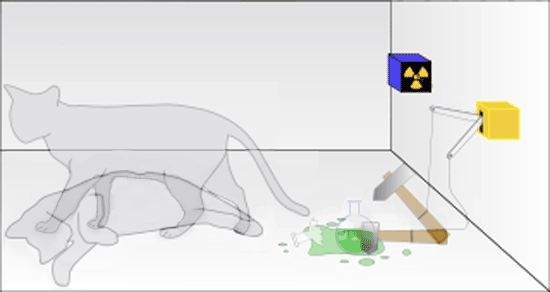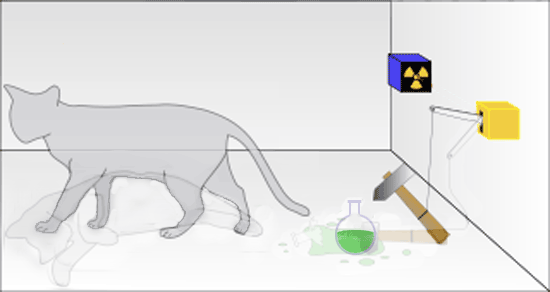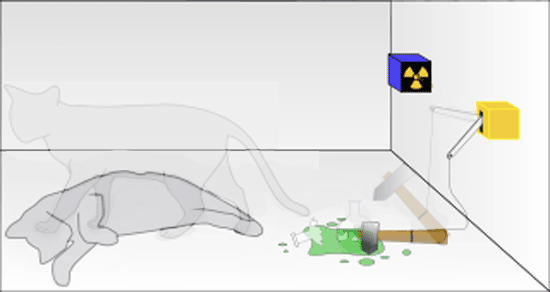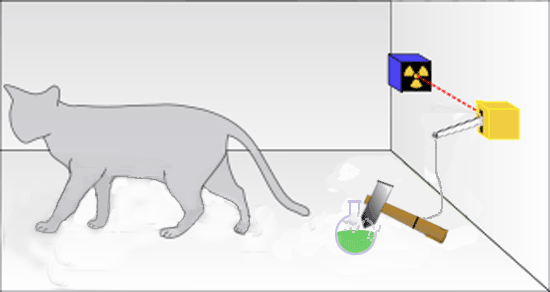|
Philosophers
Mortimer Adler Rogers Albritton Alexander of Aphrodisias Samuel Alexander William Alston Anaximander G.E.M.Anscombe Anselm Louise Antony Thomas Aquinas Aristotle David Armstrong Harald Atmanspacher Robert Audi Augustine J.L.Austin A.J.Ayer Alexander Bain Mark Balaguer Jeffrey Barrett William Barrett William Belsham Henri Bergson George Berkeley Isaiah Berlin Richard J. Bernstein Bernard Berofsky Robert Bishop Max Black Susanne Bobzien Emil du Bois-Reymond Hilary Bok Laurence BonJour George Boole Émile Boutroux Daniel Boyd F.H.Bradley C.D.Broad Michael Burke Jeremy Butterfield Lawrence Cahoone C.A.Campbell Joseph Keim Campbell Rudolf Carnap Carneades Nancy Cartwright Gregg Caruso Ernst Cassirer David Chalmers Roderick Chisholm Chrysippus Cicero Tom Clark Randolph Clarke Samuel Clarke Anthony Collins Antonella Corradini Diodorus Cronus Jonathan Dancy Donald Davidson Mario De Caro Democritus Daniel Dennett Jacques Derrida René Descartes Richard Double Fred Dretske John Earman Laura Waddell Ekstrom Epictetus Epicurus Austin Farrer Herbert Feigl Arthur Fine John Martin Fischer Frederic Fitch Owen Flanagan Luciano Floridi Philippa Foot Alfred Fouilleé Harry Frankfurt Richard L. Franklin Bas van Fraassen Michael Frede Gottlob Frege Peter Geach Edmund Gettier Carl Ginet Alvin Goldman Gorgias Nicholas St. John Green H.Paul Grice Ian Hacking Ishtiyaque Haji Stuart Hampshire W.F.R.Hardie Sam Harris William Hasker R.M.Hare Georg W.F. Hegel Martin Heidegger Heraclitus R.E.Hobart Thomas Hobbes David Hodgson Shadsworth Hodgson Baron d'Holbach Ted Honderich Pamela Huby David Hume Ferenc Huoranszki Frank Jackson William James Lord Kames Robert Kane Immanuel Kant Tomis Kapitan Walter Kaufmann Jaegwon Kim William King Hilary Kornblith Christine Korsgaard Saul Kripke Thomas Kuhn Andrea Lavazza James Ladyman Christoph Lehner Keith Lehrer Gottfried Leibniz Jules Lequyer Leucippus Michael Levin Joseph Levine George Henry Lewes C.I.Lewis David Lewis Peter Lipton C. Lloyd Morgan John Locke Michael Lockwood Arthur O. Lovejoy E. Jonathan Lowe John R. Lucas Lucretius Alasdair MacIntyre Ruth Barcan Marcus Tim Maudlin James Martineau Nicholas Maxwell Storrs McCall Hugh McCann Colin McGinn Michael McKenna Brian McLaughlin John McTaggart Paul E. Meehl Uwe Meixner Alfred Mele Trenton Merricks John Stuart Mill Dickinson Miller G.E.Moore Ernest Nagel Thomas Nagel Otto Neurath Friedrich Nietzsche John Norton P.H.Nowell-Smith Robert Nozick William of Ockham Timothy O'Connor Parmenides David F. Pears Charles Sanders Peirce Derk Pereboom Steven Pinker U.T.Place Plato Karl Popper Porphyry Huw Price H.A.Prichard Protagoras Hilary Putnam Willard van Orman Quine Frank Ramsey Ayn Rand Michael Rea Thomas Reid Charles Renouvier Nicholas Rescher C.W.Rietdijk Richard Rorty Josiah Royce Bertrand Russell Paul Russell Gilbert Ryle Jean-Paul Sartre Kenneth Sayre T.M.Scanlon Moritz Schlick John Duns Scotus Arthur Schopenhauer John Searle Wilfrid Sellars David Shiang Alan Sidelle Ted Sider Henry Sidgwick Walter Sinnott-Armstrong Peter Slezak J.J.C.Smart Saul Smilansky Michael Smith Baruch Spinoza L. Susan Stebbing Isabelle Stengers George F. Stout Galen Strawson Peter Strawson Eleonore Stump Francisco Suárez Richard Taylor Kevin Timpe Mark Twain Peter Unger Peter van Inwagen Manuel Vargas John Venn Kadri Vihvelin Voltaire G.H. von Wright David Foster Wallace R. Jay Wallace W.G.Ward Ted Warfield Roy Weatherford C.F. von Weizsäcker William Whewell Alfred North Whitehead David Widerker David Wiggins Bernard Williams Timothy Williamson Ludwig Wittgenstein Susan Wolf Scientists David Albert Michael Arbib Walter Baade Bernard Baars Jeffrey Bada Leslie Ballentine Marcello Barbieri Gregory Bateson Horace Barlow John S. Bell Mara Beller Charles Bennett Ludwig von Bertalanffy Susan Blackmore Margaret Boden David Bohm Niels Bohr Ludwig Boltzmann Emile Borel Max Born Satyendra Nath Bose Walther Bothe Jean Bricmont Hans Briegel Leon Brillouin Stephen Brush Henry Thomas Buckle S. H. Burbury Melvin Calvin Donald Campbell Sadi Carnot Anthony Cashmore Eric Chaisson Gregory Chaitin Jean-Pierre Changeux Rudolf Clausius Arthur Holly Compton John Conway Simon Conway-Morris Jerry Coyne John Cramer Francis Crick E. P. Culverwell Antonio Damasio Olivier Darrigol Charles Darwin Richard Dawkins Terrence Deacon Lüder Deecke Richard Dedekind Louis de Broglie Stanislas Dehaene Max Delbrück Abraham de Moivre Bernard d'Espagnat Paul Dirac Hans Driesch John Dupré John Eccles Arthur Stanley Eddington Gerald Edelman Paul Ehrenfest Manfred Eigen Albert Einstein George F. R. Ellis Hugh Everett, III Franz Exner Richard Feynman R. A. Fisher David Foster Joseph Fourier Philipp Frank Steven Frautschi Edward Fredkin Augustin-Jean Fresnel Benjamin Gal-Or Howard Gardner Lila Gatlin Michael Gazzaniga Nicholas Georgescu-Roegen GianCarlo Ghirardi J. Willard Gibbs James J. Gibson Nicolas Gisin Paul Glimcher Thomas Gold A. O. Gomes Brian Goodwin Joshua Greene Dirk ter Haar Jacques Hadamard Mark Hadley Patrick Haggard J. B. S. Haldane Stuart Hameroff Augustin Hamon Sam Harris Ralph Hartley Hyman Hartman Jeff Hawkins John-Dylan Haynes Donald Hebb Martin Heisenberg Werner Heisenberg Grete Hermann John Herschel Basil Hiley Art Hobson Jesper Hoffmeyer Don Howard John H. Jackson William Stanley Jevons Roman Jakobson E. T. Jaynes Pascual Jordan Eric Kandel Ruth E. Kastner Stuart Kauffman Martin J. Klein William R. Klemm Christof Koch Simon Kochen Hans Kornhuber Stephen Kosslyn Daniel Koshland Ladislav Kovàč Leopold Kronecker Rolf Landauer Alfred Landé Pierre-Simon Laplace Karl Lashley David Layzer Joseph LeDoux Gerald Lettvin Gilbert Lewis Benjamin Libet David Lindley Seth Lloyd Werner Loewenstein Hendrik Lorentz Josef Loschmidt Alfred Lotka Ernst Mach Donald MacKay Henry Margenau Owen Maroney David Marr Humberto Maturana James Clerk Maxwell Ernst Mayr John McCarthy Warren McCulloch N. David Mermin George Miller Stanley Miller Ulrich Mohrhoff Jacques Monod Vernon Mountcastle Emmy Noether Donald Norman Travis Norsen Alexander Oparin Abraham Pais Howard Pattee Wolfgang Pauli Massimo Pauri Wilder Penfield Roger Penrose Steven Pinker Colin Pittendrigh Walter Pitts Max Planck Susan Pockett Henri Poincaré Daniel Pollen Ilya Prigogine Hans Primas Zenon Pylyshyn Henry Quastler Adolphe Quételet Pasco Rakic Nicolas Rashevsky Lord Rayleigh Frederick Reif Jürgen Renn Giacomo Rizzolati A.A. Roback Emil Roduner Juan Roederer Jerome Rothstein David Ruelle David Rumelhart Robert Sapolsky Tilman Sauer Ferdinand de Saussure Jürgen Schmidhuber Erwin Schrödinger Aaron Schurger Sebastian Seung Thomas Sebeok Franco Selleri Claude Shannon Charles Sherrington Abner Shimony Herbert Simon Dean Keith Simonton Edmund Sinnott B. F. Skinner Lee Smolin Ray Solomonoff Roger Sperry John Stachel Henry Stapp Tom Stonier Antoine Suarez Leo Szilard Max Tegmark Teilhard de Chardin Libb Thims William Thomson (Kelvin) Richard Tolman Giulio Tononi Peter Tse Alan Turing C. S. Unnikrishnan Nico van Kampen Francisco Varela Vlatko Vedral Vladimir Vernadsky Mikhail Volkenstein Heinz von Foerster Richard von Mises John von Neumann Jakob von Uexküll C. H. Waddington James D. Watson John B. Watson Daniel Wegner Steven Weinberg Paul A. Weiss Herman Weyl John Wheeler Jeffrey Wicken Wilhelm Wien Norbert Wiener Eugene Wigner E. O. Wilson Günther Witzany Stephen Wolfram H. Dieter Zeh Semir Zeki Ernst Zermelo Wojciech Zurek Konrad Zuse Fritz Zwicky Presentations Biosemiotics Free Will Mental Causation James Symposium |
Schrödinger's Cat
Erwin Schrödinger's intention for his infamous cat-killing box was to discredit certain non-intuitive implications of quantum mechanics, of which his wave mechanics was the second formulation. Schrödinger's wave mechanics is more continuous mathematically, and apparently more deterministic, than Werner Heisenberg's matrix mechanics.
Schrödinger did not like Niels Bohr's idea of "quantum jumps" between Bohr's "stationary states" - the different "energy levels" in an atom. Bohr's "quantum postulate" said that the jumps between discrete states emitted (or absorbed) energy in the amount hν = E2 - E1.
Bohr did not accept Albert Einstein's 1905 hypothesis that the radiation was a spatially localized quantum of energy hν. Until well into the 1920's, Bohr (and Max Planck, the inventor of the quantum hypothesis himself) believed radiation was a continuous wave. This was the question of wave-particle duality, which Einstein saw as early as 1909.
It was Einstein who originated the suggestion that the superposition of Schrödinger's wave functions implied that two different physical states could exist at the same time. This was a serious interpretational error that plagues the foundation of quantum physics to this day.
This error is found frequently in discussions of so-called "entangled" states (see the Einstein-Podolsky-Rosen experiment).
Entanglement occurs only for atomic level phenomena and over limited distances that preserve the coherence of two-particle wave functions by isolating the systems (and their eigenfunctions) from interactions with the environment.
We never actually "see" or measure any system (whether a microscopic electron or a macroscopic cat) in two distinct states. Quantum mechanics simply predicts a significant probability of the system being found in these different states. And these probability predictions are borne out by the statistics of large numbers of identical experiments.
The Pauli Exclusion Principle says (correctly) that two identical indistinguishable (fermion) particles cannot be in the same place at the same time. Entanglement is often interpreted (incorrectly) as saying that a single particle can be in two places at the same time. Dirac's Principle of Superposition does not say that a particle is in two states at the same time, only that there is a non-zero probability of finding it in either state should it be measured.Max Born described the somewhat paradoxical result: The motion of the particle follows the laws of probability, but the probability itself propagates in accord with causal laws.Einstein wrote to Schrödinger with the idea that the decay of a radioactive nucleus could be arranged to set off a large explosion. Since the moment of decay is unknown, Einstein argued that the superposition of decayed and undecayed nuclear states implies the superposition of an explosion and no explosion. It does not. In both the microscopic and macroscopic cases, quantum mechanics simply estimates the probability amplitudes for the two cases. Many years later, Richard Feynman made Einstein's suggestion into a nuclear explosion! (What is it about some scientists?) Einstein and Schrödinger did not like the fundamental randomness implied by quantum mechanics. They wanted to restore determinism to physics. Indeed Schrödinger's wave equation predicts a perfectly deterministic time evolution of the wave function. But what is evolving deterministically is only abstract probabilities. And these probabilities are confirmed only in the statistics of large numbers of identically prepared experiments. Randomness enters only when a measurement is made and the wave function "collapses" into one of the possible states of the system.
Schrödinger devised a variation in which the random radioactive decay would kill a cat. Observers could not know what happened until the box is opened.
The details of the tasteless experiment include:
Normal | Teacher | Scholar

What's wrong with this picture?
Quantum mechanics claims only that the time evolution of the Schrödinger wave functions for the probability amplitudes of nuclear decay accurately predict the proportion of nuclear decays that will occur in a given time interval.
(Classical) probabilities (no interference between terms) simply predict the number of live and dead cats that will be observed in a large number of identical experiments.
More specifically, quantum mechanics provides us with the accurate prediction that if this experiment is repeated many times (the SPCA would disapprove), half of the experiments will result in dead cats.
Note that this is a problem in epistemology. What knowledge is it that quantum physics provides?
If we open the box at the time T when there is a 50% probability of an alpha particle emission, the most a physicist can know is that there is a 50% chance that the radioactive decay will have occurred and the cat will be observed as dead or dying.
If the box were opened earlier, say at T/2, there is only a 25% chance that the cat has died. Schrödinger's superposition of live and dead cats would look like this.
Quantum "probability amplitudes" do allow interference between the possible states of a quantum object, but not between macroscopic objects like live and dead cats  If the box were opened later, say at 2T, there is only a 25% chance that the cat is still alive. Quantum mechanics is giving us only statistical information - knowledge about probabilities.
If the box were opened later, say at 2T, there is only a 25% chance that the cat is still alive. Quantum mechanics is giving us only statistical information - knowledge about probabilities.
 Schrödinger is simply wrong that the mixture of nuclear wave functions that accurately describes decay can be magnified to the macroscopic world to describe a similar mixture of live cat and dead cat wave functions and the simultaneous existence of live and dead cats.
The kind of coherent superposition of states needed to describe an atomic system as in a linear combination of states (see Paul Dirac's explanation of superposition using three polarizers) does not describe macroscopic systems.
Instead of a linear combination of pure quantum states, with quantum interference between the states, i.e.,
Schrödinger is simply wrong that the mixture of nuclear wave functions that accurately describes decay can be magnified to the macroscopic world to describe a similar mixture of live cat and dead cat wave functions and the simultaneous existence of live and dead cats.
The kind of coherent superposition of states needed to describe an atomic system as in a linear combination of states (see Paul Dirac's explanation of superposition using three polarizers) does not describe macroscopic systems.
Instead of a linear combination of pure quantum states, with quantum interference between the states, i.e.,
| Cat > = ( 1/√2) | Live > + ( 1/√2) | Dead >,
quantum mechanics tells us only that there is 50% chance of finding the cat in either the live or dead state, i.e.,
Cats = (1/2) Live + (1/2) Dead.
Just as in the quantum case, this probability prediction is confirmed by the statistics of repeated identical experiments, but no interference between these states is seen.
What do exist simultaneously in the macroscopic world are genuine alternative possibilities for future events. There is the real possibility of a live or dead cat in any particular experiment. Which one is found is irreducibly random, unpredictable, and a matter of pure chance.
Genuine alternative possibilities is what bothered physicists like Einstein, Schrödinger, and Max Planck who wanted a return to deterministic physics. It also bothers determinist and compatibilist philosophers who have what William James calls an "antipathy to chance." Ironically, it was Einstein himself, in 1916, who discovered the existence of irreducible chance, in the elementary interactions of matter and radiation.
Until the information comes into existence, the future is indeterministic. Once information is macroscopically encoded, the past is determined.
How does information physics resolve the paradox?
As soon as the alpha particle sets off the avalanche of electrons in the Geiger counter (an irreversible event with a significant entropy increase), new information is created in the world.
For example, a simple pen-chart recorder attached to the Geiger counter could record the time of decay, which a human observer could read at any later time. Notice that, as usual in information creation, the energy expended by a recorder increases the entropy more than the increased information decreases it, thus satisfying the second law of thermodynamics.
 Even without a mechanical recorder, the cat's death sets in motion biological processes that constitute an equivalent, if gruesome, recording. When a dead cat is the result, a sophisticated autopsy can provide an approximate time of death, because the cat's body is acting as an event recorder. There never is a superposition (in the sense of the simultaneous existence) of live and dead cats.
The paradox points clearly to the Information Philosophy solution to the problem of measurement. Human observers are not required to make measurements. In this case, the cat is the observer.
In most physics measurements, the new information is captured by apparatus well before any physicist has a chance to read any dials or pointers that indicate what happened. Indeed, in today's high-energy particle interaction experiments, the data may be captured but not fully analyzed until many days or even months of computer processing establishes what was observed. In this case, the experimental apparatus is the observer.
And, in general, the universe is its own observer, able to record (and sometimes preserve) the information created.
Even without a mechanical recorder, the cat's death sets in motion biological processes that constitute an equivalent, if gruesome, recording. When a dead cat is the result, a sophisticated autopsy can provide an approximate time of death, because the cat's body is acting as an event recorder. There never is a superposition (in the sense of the simultaneous existence) of live and dead cats.
The paradox points clearly to the Information Philosophy solution to the problem of measurement. Human observers are not required to make measurements. In this case, the cat is the observer.
In most physics measurements, the new information is captured by apparatus well before any physicist has a chance to read any dials or pointers that indicate what happened. Indeed, in today's high-energy particle interaction experiments, the data may be captured but not fully analyzed until many days or even months of computer processing establishes what was observed. In this case, the experimental apparatus is the observer.
And, in general, the universe is its own observer, able to record (and sometimes preserve) the information created.
The basic assumption made in Schrödinger's cat thought experiments is that the deterministic Schrödinger equation describing a microscopic superposition of decayed and non-decayed radioactive nuclei evolves deterministically into a macroscopic superposition of live and dead cats. But since the essence of a "measurement" is an interaction with another system (quantum or classical) that creates information to be seen (later) by an observer, the interaction between the nucleus and the cat is more than enough to collapse the wave function. Calculating the probabilities for that collapse allows us to estimate the probabilities of live and dead cats. These are probabilities, not probability amplitudes. They do not interfere with one another. After the interaction, they are not in a superposition of states. We always have either a live cat or a dead cat, just as we always observe a complete photon after a polarization measurement and not a superposition of photon states, as P.A.M.Dirac explains so simply and clearly. According to quantum mechanics the result of this experiment will be that sometimes one will find a whole photon, of energy equal to the energy of the incident photon, on the back side and other times one will find nothing. When one finds a whole photon, it will be polarized perpendicular to the optic axis. One will never find only a part of a photon on the back side. If one repeats the experiment a large number of times, one will find the photon on the back side in a fraction sin2α of the total number of times.
Decoherence and the Lack of Macroscopic Superpositions
Despite the claims of decoherence theorists, microscopic superpositions of quantum states do not allow us to "see" a system in two different states. Quantum mechanics simply predicts a significant probability of the system being found in these different states. Thus it is no surprise that we do not see macroscopic "superpositions of live and dead cats" at the same time. What does exist at any given time is the probabilities of the two states (in the macroscopic world) and the probability amplitude of the two states (which can coherently interfere with one another) in the microscopic world.
Decoherence theorists claim that they explain the "mysterious" non-appearance of macroscopic superpositions of states. But quantum mechanics does not predict such states, despite the popular idea of macroscopic superposition of live and dead cats.
An Historical Note
This was not Schrödinger's original idea. It was a version of an idea of Einstein's about gunpowder that could be in two quantum states. He sent this to Schrödinger in 1935...
The system is a substance in chemically unstable equilibrium, perhaps a charge of gunpowder that, by means of intrinsic forces, can spontaneously combust, and where the average life span of the whole setup is a year. In principle this can quite easily be represented quantum-mechanically. In the beginning the psi-function characterizes a reasonably well-defined macroscopic state. But, according to your equation [i.e., the Schrödinger equation], after the course of a year this is no longer the case. Rather, the psi-function then describes a sort of blend of not-yet and already-exploded systems. Through no art of interpretation can this psi-function be turned into an adequate description of a real state of affairs; in reality there is no intermediary between exploded and not-exploded.Schrödinger turned the gunpowder into his Cat. |